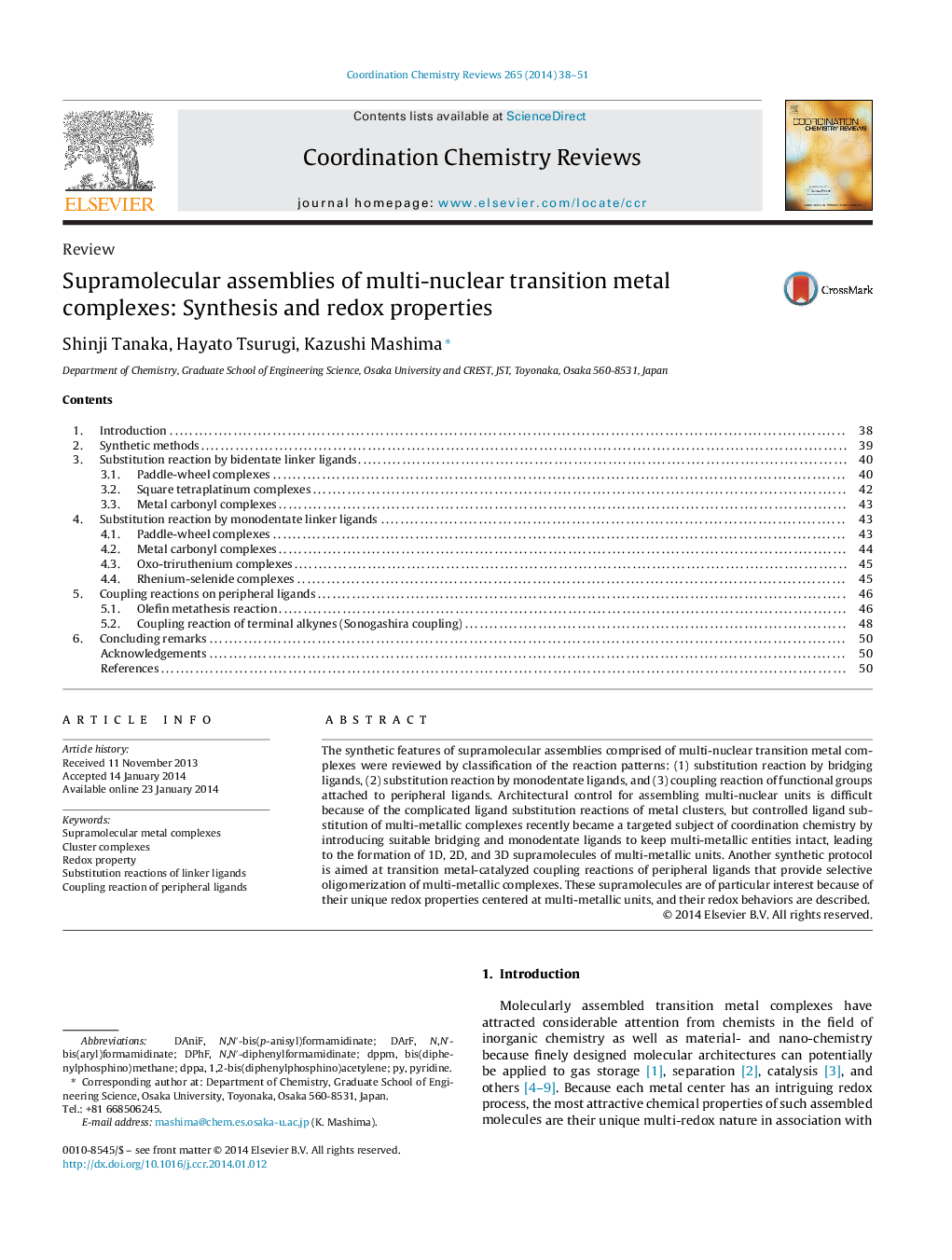| کد مقاله | کد نشریه | سال انتشار | مقاله انگلیسی | نسخه تمام متن |
|---|---|---|---|---|
| 1299507 | 1498748 | 2014 | 14 صفحه PDF | دانلود رایگان |

• Assemblies of multi-metallic complexes are classified by three reaction patterns.
• Attractive redox behaviors of assembled transition metal complexes.
• Controlled ligand substitutions of multi-nuclear transition metal complexes.
• Metal-catalyzed coupling reactions of peripheral ligands.
The synthetic features of supramolecular assemblies comprised of multi-nuclear transition metal complexes were reviewed by classification of the reaction patterns: (1) substitution reaction by bridging ligands, (2) substitution reaction by monodentate ligands, and (3) coupling reaction of functional groups attached to peripheral ligands. Architectural control for assembling multi-nuclear units is difficult because of the complicated ligand substitution reactions of metal clusters, but controlled ligand substitution of multi-metallic complexes recently became a targeted subject of coordination chemistry by introducing suitable bridging and monodentate ligands to keep multi-metallic entities intact, leading to the formation of 1D, 2D, and 3D supramolecules of multi-metallic units. Another synthetic protocol is aimed at transition metal-catalyzed coupling reactions of peripheral ligands that provide selective oligomerization of multi-metallic complexes. These supramolecules are of particular interest because of their unique redox properties centered at multi-metallic units, and their redox behaviors are described.
Figure optionsDownload high-quality image (156 K)Download as PowerPoint slide
Journal: Coordination Chemistry Reviews - Volume 265, April 2014, Pages 38–51